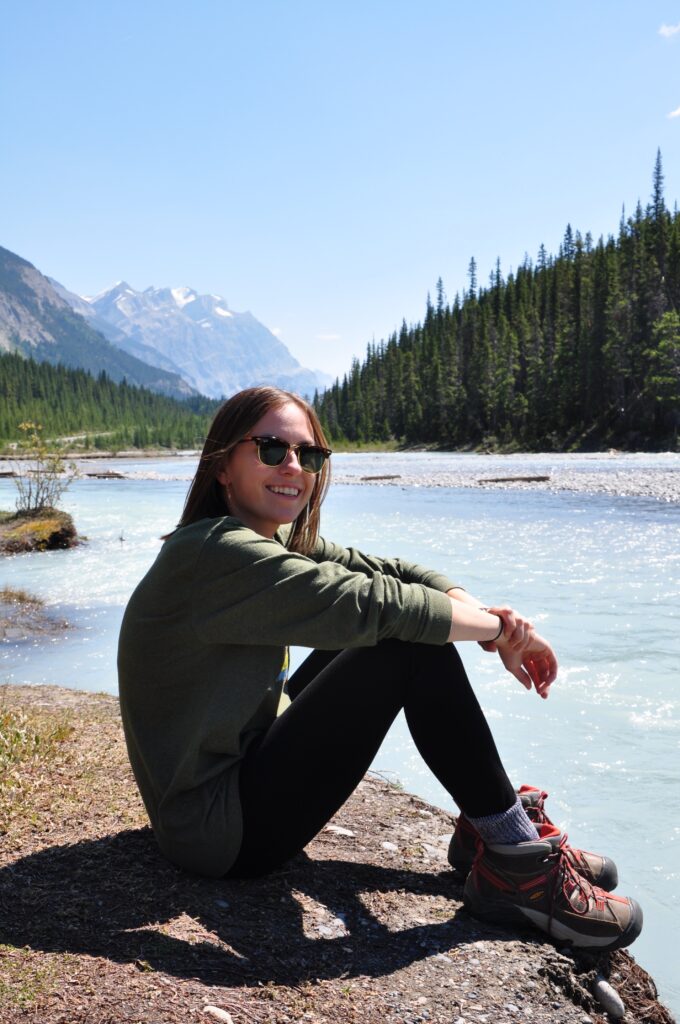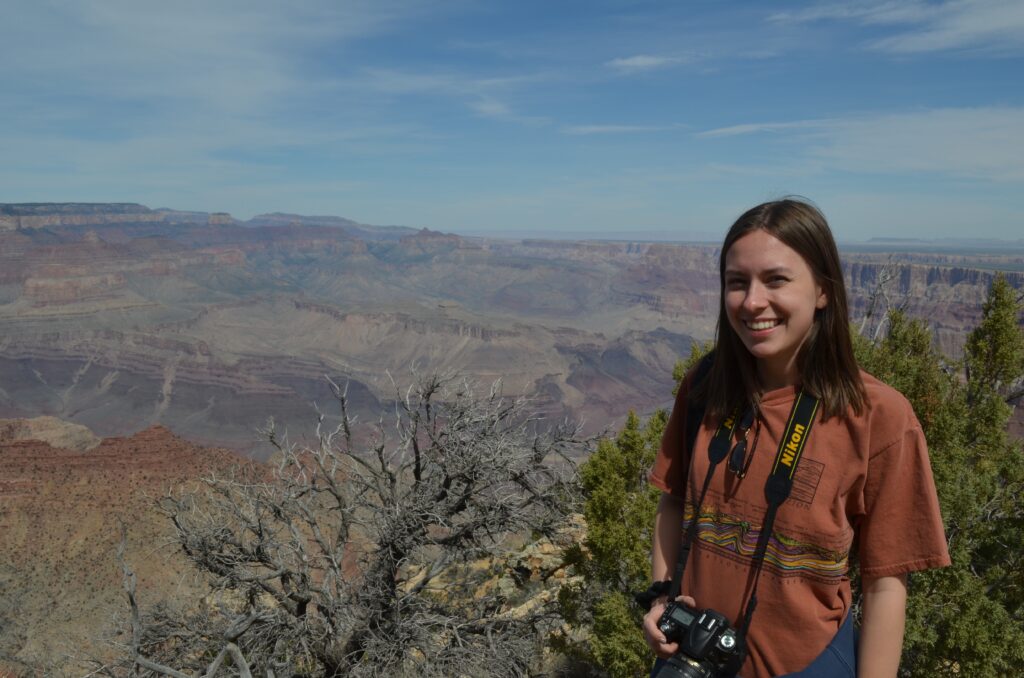By Arianne Snyder
Brooke Kopecky is an environmental geologist currently working at the Texas Commission on Environmental Quality (TCEQ). She has a degree in geological sciences from the Jackson School and from 2017 to 2019, worked as a student research assistant in UTIG’s climate group.
At TCEQ, she works in a project manager role, helping sites progress through the remediation process. Some of Brooke’s duties include doing geology reviews to characterize sites and inform remedial objectives, performing site sampling visits, and working with engineers in the remedial assessment and design phase of projects.
The skills she learned as a student researcher are helping her succeed in her job and follow her dream of becoming an environmental scientist.
Hi Brooke. Why did you choose the Jackson School of Geosciences?
I’m from Houston, Texas, and UT Austin always had a bit of a draw because Austin is a really nice city. It is outdoorsy – you can swim, bike, and hike. But my main motivation for coming to UT was because the Jackson School is great for studying geology, the best in Texas.
Why did you want to study geology?
I knew that I liked being outdoors but I didn’t really know what I wanted to do in college. I was on the UT Austin website looking up majors, when I saw a Jackson School promotional video showing students at a waterfall saying “this could be your classroom.” It’s cheesy, but now I can say it was definitely the right choice!
What research projects were you involved with as a student researcher at UTIG?
I was part of a paleoclimate lab using isotope geochemistry to study climate, specifically the El Niño-Southern Oscillation (ENSO) throughout the Holocene. My own project investigated variability in El Niño in the Mid-Holocene, so around six to seven thousand years ago.
I think the main thing I learned was how to go from step A (literally a coral growing in the ocean) all the way to step F, or G, (where the coral becomes a climate record). My research has taken me through every step in the process, from getting and analyzing data from corals, to interpreting climate records and drawing conclusions.
What is El Niño? Grad Student Mentor, Allison Lawman explains.
“El Niño is the warm phase of an ocean-atmosphere phenomenon called the El Niño-Southern Oscillation, or ENSO. La Niña is the cold phase. El Niño and La Niña events occur along the equator in the Pacific during the winter months every 2-7 years. ENSO has a large impact on global weather patterns even in regions far away from the equatorial Pacific.“
We also worked with Fred Taylor who was a Senior Research Scientist at UTIG until he retired earlier this year. Fred is super knowledgeable about corals and would decide which ones to study on expeditions.
In September (2019), the researchers in our lab went to Vanuatu, which is a small tropical island in the South Pacific, kind of near Fiji, to find coral that grew during the last glacial maximum. The team found corals that grew approximately 21,000 ago, which would make them the oldest corals ever used for reconstructing ENSO!
We built a special drill for that trip which was tested on some carbonate rocks out at the Jackson School’s Texas Observatory (the White Family Outdoor Learning Center). I was involved in testing an earlier version of the drill, which was basically a chainsaw with a corer rigged on one end. I practiced coring into some concrete blocks for that one: it was terrifying, but fun!

What other field trips did you go on while at UT?
The Jackson School does field camp (and has done for more than a century!), which is a six-week camping trip to Texas, New Mexico, Wyoming, and Montana, designed to teach you everything you need to know about geology. I took part in Summer 2018. A typical day involved mapping and doing cross sections. We learned everything from stratigraphy to geologic interpretations of outcrops. We didn’t really take any samples because on a lot of the nationally-owned land we were on, you can’t hammer or take rock. But we didn’t really need to use hammers anyways, because you can actually see most of the stuff at the surface. All you need is your compass, your map and your board. That was cool.
You mentioned that your project involved studying paleoclimate. What does past climate tell us about climate change now?
El Niño is super important because it can cause extreme drought in some parts of the world and floods in others. We are trying to see how the whole system will respond in the face of rising temperatures and increased carbon dioxide. Will it increase in intensity and frequency? Will it make some areas uninhabitable, and if so, where? Changing El Niño definitely has implications for agriculture and human life. As with most things in geology, the best way to prepare for the future is looking to the past.
What advice do you have for future Jackson School students?
You should get involved in research because it is a really enriching experience that offers opportunities to learn outside of the classroom. Above all, don’t be afraid to get involved with projects and research topics that are outside of your normal focus or major. Working in paleoclimate has taught me that there are many talented people working on all sorts of innovative solutions to solve some of the world’s biggest challenges. To be a part of that is really special, and I am proud to say that my research at the Jackson School and the work I do now at TCEQ has had a tangible impact on humans and the environment.
Learn more about Jackson School and UTIG undergraduate research opportunities.

